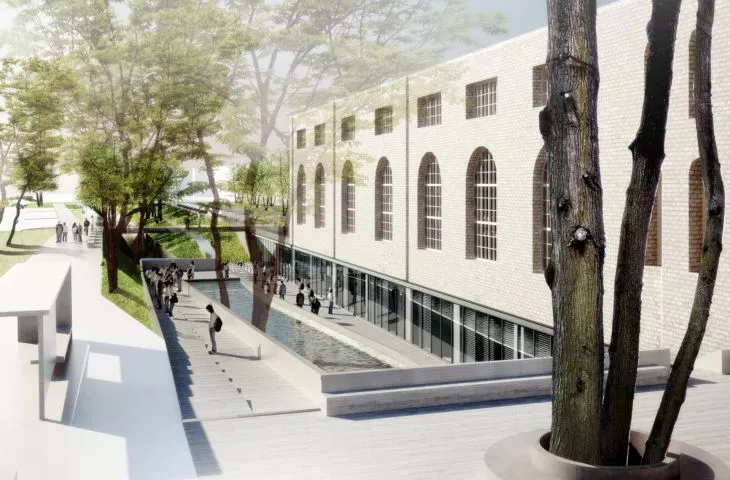The April issue of A&B is devoted to the conditions for practicing the architectural profession. On our portal, as part of the series entitled "The profession of an architect" we continue the conversation started on the pages of moodboard - we ask what it means today to be an architect and what are the conditions of practicing this profession, and we illustrate the statements with unrealised office projects. Read what Marta Sękulska-Wronska, an architect from the WXCA studio and president of the Warsaw branch of SARP, thinks on the subject.
Marta Sękulska-Wrońska
© WXCA
1 What does it mean to be an architect today?
To practice the profession of an architect today is to find oneself in an interdisciplinary world. Our main role - being a creator - has been overbuilt with further roles, resulting from increasing expectations of our profession. Thus, we combine a creative component with elements of understanding the social, business and legal environment, and we also move fairly easily between the technical aspects that industry professionals deal with on a daily basis.
What is important is the invaluable ability to build teams of people with complementary strengths, who together propose a completely new quality. They can work together to develop ideas, co-create the world, transform the landscape in a sustainable way, take responsibility not only for beauty, form, but also for the environment. Today the strength is in the team, in the sum of talents, where each is unique, and together they form a mixture that cannot be replaced by the most perfect machine.
I mention technologies for a reason, because today, we architects must also communicate and fruitfully use the benefits of technology. Sometimes we wonder how realistic it is for artificial intelligence to replace our work. After all, AI already painted the first painting two years ago, which even sold at auction for a handsome sum. So the machine is entering art - a domain seemingly reserved exclusively for human beings. Fortunately, all indications are that, for the time being, only a human being is so sensitive to beauty and is able to seek its most perfect expression, perceive the genius loci or understand the context of both place and time.
2 What are the conditions for practicing the profession of architecture?
The conditions for practicing the architectural profession have been changing dynamically in recent times. I notice a disturbing phenomenon of becoming more and more immersed in the world of regulations. For an artist, this is quite a painful path. Instead of focusing on creating the best possible work, we have to become more and more proficient in understanding the law. Instead of focusing on the quality of the space created, we think about the letter.
Cooperation with authorities should be a dialogue in the spirit of good practice, during which the best forms in accordance with the law are worked out. At present, however, people barricade themselves behind laws, resolutions, ordinances, as if these should determine the quality of public spaces and buildings.
The laws that govern our business are changing very rapidly. For our investors, we should be guides in the world of regulations, so we really spend a lot of time reading and understanding new provisions. There are no more beaten paths that speed up paperwork and make investment processes more time-efficient. Still, we are rewarded for work, not for hours spent on paragraphs.
I also see the organization of such legal weapons in public procurement processes and among some investors. Payment of remuneration for our sometimes months-long creative work depends on factors for which the designer is not statutorily responsible. Contracts are difficult, protecting the Principals from all things. Often these are not partnership terms. Such contracts or, more broadly, legal regulations that do not place a premium on the success of both parties do not support the creation of good architectural designs. Those who create barricades and line up behind them forget that, after all, we are playing on the same team. We architects are first and foremost concerned with the realization of an exceptional project, not with the execution of a concept for a drawer. For creators, the most important thing is to materialize the idea.
Also disturbing is the lack of equal treatment of all parties involved in the investment process. Architects are expected to take credit for design work until the "final building permit" is obtained. We are accused of misunderstanding when we expect to be paid thousands for our work, while general contractors are paid millions before the desired result is achieved. And, after all, we, like construction companies, incur costs doing our jobs.
We want to create beautiful projects, to be partners with our investors in the difficult investment process. Success, however, is achieved when a favorable environment is created.
Marta SEKULSKA-WROŃSKA
IARP architect, Partner at WXCA studio,
President of the Warsaw branch of SARP

















